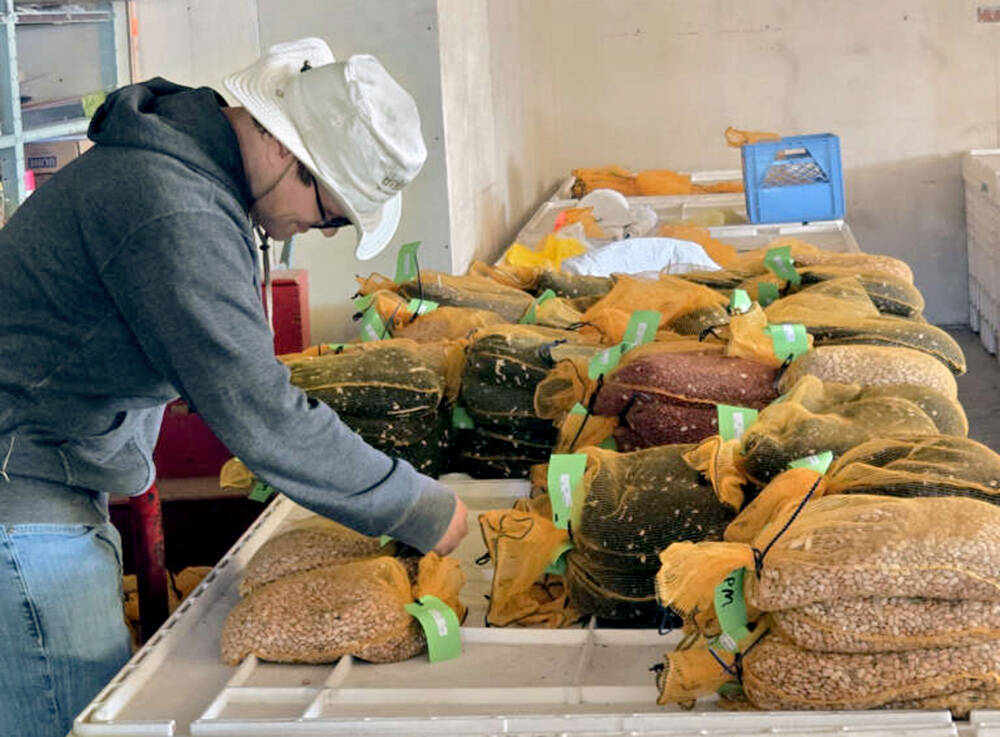Twenty years ago, growers were less likely to adopt strip till on their farms, primarily because the practice lacked an immediate payback with higher yields. It didn’t help that early adopters had to develop their own systems if applying fertilizer while strip tilling.
In theory, strip till should boost yields, based on “berming” the soil and warming it faster for spring planting. Yet its adoption rate remains relatively slow, albeit incrementally positive, says Jake Munroe, field crops soil specialist with the Ontario Ministry of Agriculture, Food and Rural Affairs (OMAFRA).
Why it matters: Strip till offers growers benefits such as increased soil health and reduced fertilizer use.
Read Also

Bean research breeds community giving
University of Guelph dry bean researcher Dr. Mohsen Yoosefzadeh Najafabadi champions sustainability by donating surplus breeding program beans to support food security and community art initiatives.
“It ranges from ‘yes, there’s a lot of new interest in the last few years’, to ‘no, it’s pretty much flat-lined’,” says Munroe, citing responses from agronomists across the province. “A lot of the adoption was back in 2015, ’16 and ’17 and it’s been very regional.”
Munroe and provincial corn specialist Ben Rosser were part of a Farm and Food Care Ontario initiative, including YouTube videos with five farmer advocates. Each video features the growers and their rationale for strip-till management, and their reasoning varies depending on region, soil type and individual goals.
“For example, does the grower have fertilizer on the planter or are using strip till to replace that? Are they putting phosphorus and potash down in the spring as well as nitrogen? It’s dependent on the grower. Some are fall only, some are spring only – especially on lighter soils,” Munroe says.
Other videos on the website include segments on getting started and the economics and cost-of-production considerations. According to Munroe, OMAFRA has also created two new strip-till factsheets. It is partnering with Soils at Guelph with a strip-tillage demonstration at Canada’s Outdoor Farm Show Sept. 13-15. Growers will see strip-till operations with different pieces of equipment and different cover crop stands.
Changes and considerations
Compared to 2019 or 2020, the economic landscape this year has growers trying to reduce operating costs to manage high prices for fuel and fertilizers.
Mike Cornelissen is a grower from Watford, Ont. and farms with his father, George, and brother, Kyle, who are chicken producers. Mike has been using strip till for several years, upgrading his equipment three times as manufacturers roll out new designs.
The poultry operation supplies manure, which is supplemented with nutrients from rented barns or manure they purchase.
“We use strip till as the main source to add our P and K, which has worked very well for us to apply in variable rates,” says Cornelissen, who also operates a bell pepper greenhouse.
“In the fall, you can apply it properly to subsurface application. Strip till also works well in cover crops because it can do the tillage in good weather conditions and terminate the cover crop as late as possible.”
He’s grown plots with conventional versus strip till versus no till, and has one such plot in 2022. Results haven’t shown any significant increase in yield but they’re getting a yield benefit from the fertilizer in the strip compared to broadcast. When looking at the tillage alone, there’s no real difference.
“Strip till can work for most farms and having a strip tiller that can do both fall and spring will give you options,” says Cornelissen. “But strip till takes work: running a planter isn’t so easy anymore because we’re very focused on keeping on the strip, even with GPS. Everything in the system needs to be thought through.”
Watch for more of Ralph Pearce’s content on this topic in Country Guide.













